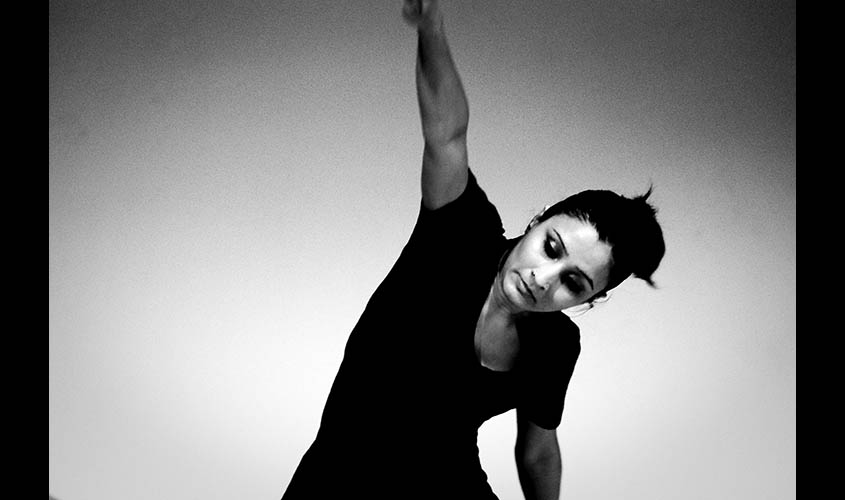Dance is a way to find oneself, and loose oneself—all in one go. It’s a form of entertainment. But can it also be used as a tool for therapy? Going by the number of dance therapy courses that are now available at various venues across India, it seems that dance can indeed help restore mind, body and soul.
A catalyst for change
“I have seen bodies changing, and, therefore, people changing,” says Tripura Kashyap, founder of the Creative Movement Therapy Association of India.
Besides being a dancer, and holding a degree in psychology, Kashyap has studied dance movement therapy at the Hancock Center, Wisconsin, US. Her journey of introducing dance movement therapy in India, though, was no “piece of cake”. It was, as she says, “before its time”.
“Dance movement therapy encompasses many nuances. What attracted me to it was the reaction it catalysed in people—be it my brother suffering from cerebral palsy, or visually challenged students swaying their bodies to the captivating sound of the flute,” she said.
In the West, dance therapy, Kashyap said, is routinely used on prisoners, addicts and domestic violence survivors. Individuals suffering from deep-rooted complexes, fears and inhibitions can also benefit from its salubrious effects.
Setting up her own dance therapy practice in India has been a challenge for Kashyap. Funds are always hard to come by. But on the positive side, there are now many takers for dance therapy.
Body and soul
Swati Mohan is the founder and director of Danza Performing Arts in Gurugram. Her classes, she says, are all about understanding and applying the principles of dance and somatic practices to the body, enabling students to work on strength, flexibility, alignment, and most importantly, balance.
“My journey with dance started when I was in pigtails, but it was only in 2002 that I committed my life to being a dancer,” she says.
Danza Performing Arts was established in 2007. Mohan says, “I used to be a dancer, but now I work with dance. Dance used to be my way out, now it is my way in. I have learnt to surrender, have patience and compassion with the self. This is the most important revelation on the path of self re-discovery using performing arts as a tool.”

Dance as life force
Neelakshi is the co-founder of a dance school called iDance India. She is also a certified reiki master and clinical hypnotherapist, who combines these “spiritual tools” with dance to heal the mind, body and soul.
She has another take on how dance help can people “open up”. “Dancing helps facilitate dopamine release. This is a chemical responsible for triggering happiness,” she says. “Besides, dancing boosts energy and fitness, and encourages better coordination between the mind and the body, if practiced regularly.
Personal benefits aside, dance has clear social advantages as well. As Neelakshi says, “Socially, dance enhances appeal and popularity, improving self-esteem. Partner dance forms, in particular, also teach individuals how to get comfortable, conduct oneself with confidence, and exercise respect towards the opposite gender while maintain good vibes.”
Neelakshi uses dance to programme the subconscious mind by “attaching cue points in the gestures”. The process reinforces positivity, and, thereby disperses negative feelings like pain, anger, resentment, and hurt accumulated over the years. Besides this, the right dance movements can also instil a dose of confidence, strength and poise in the dancer’s psyche.
Social good
Sohini Chakraborty, founder director, Kolkata Sanved, found her “calling” during her study of sociology. She amalgamated dance and sociology to help women and children who had once been victims of abuse. “I use the Sampoornata approach to empower and heal. It lays emphasis on a developmental approach rather than a purely clinical approach, using diverse forms of creative experiences to address diverse challenges the mind faces,” says Chakraborty.
According to Chakraborty, dance therapy is not about becoming a better dancer, or about developing your dancing chops. It uses the natural movement of the body to help process inner conflicts. There is an integration of the physical, psychological, social, emotional and cognitive selves when you’re undergoing dance therapy.
Kolkata Sanved organises different courses aimed towards community mobilisation, advocacy, healing and recovery among others. Says Chakraborty, “We have worked with around 65,000 survivors of violence across India, Nepal and Bangladesh; 19,000 children, adolescents and youth; 37,000 residents of government and NGO run care institutions since 14 years.”
An inclusive endeavour
Rashi Bijlani is the founder and president of Asha Hai, a project for inclusive pre-school education for children with special needs. She holds a double degree in dance movement psychotherapy and clinical psychology. “When children cannot learn, it’s time to change the way we teach. I strongly believe in this. In fact, this was instrumental in conceptualising the idea of creating an inclusive school for children with extra needs. Asha Hai supports children, who have special needs, and who hail from economically weaker sections of society, due to which they cannot access professional services. We strive to empower them to live life positively and productively,” says Bijlani.
Dance movement psychotherapy at Asha Hai uses various exploration methods, such as play, rhythm, ritual, music, vocalisation, mirroring, as well as art and drawing sessions. The session structure follows the Chasian Model of warmup, theme and movement development process, and closure.
According to Bijlani, “As an individual’s movement is seen as a form of communication, dance movement psychotherapy utilises this art to help find a language that expresses experience, vital for acceptance and development. It works on the healing of the unconscious, which is where suppressed memories lie, and which is where real healing is needed.”

